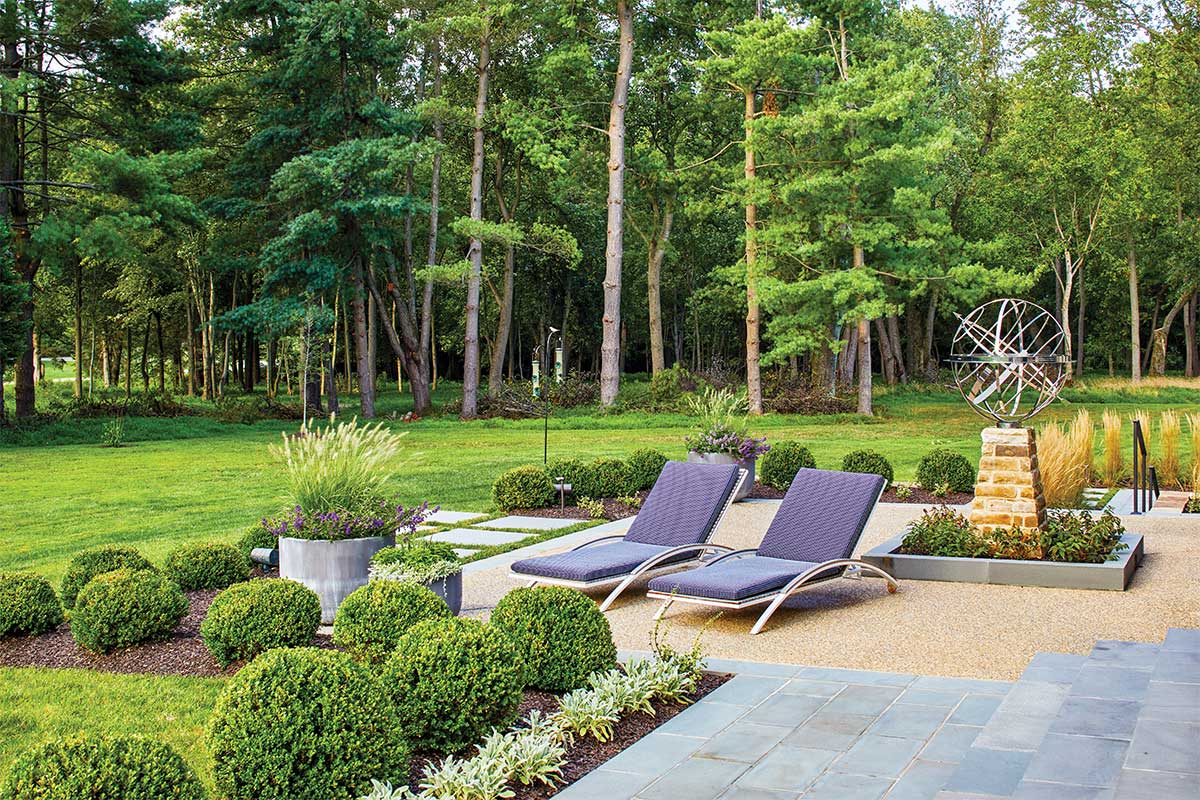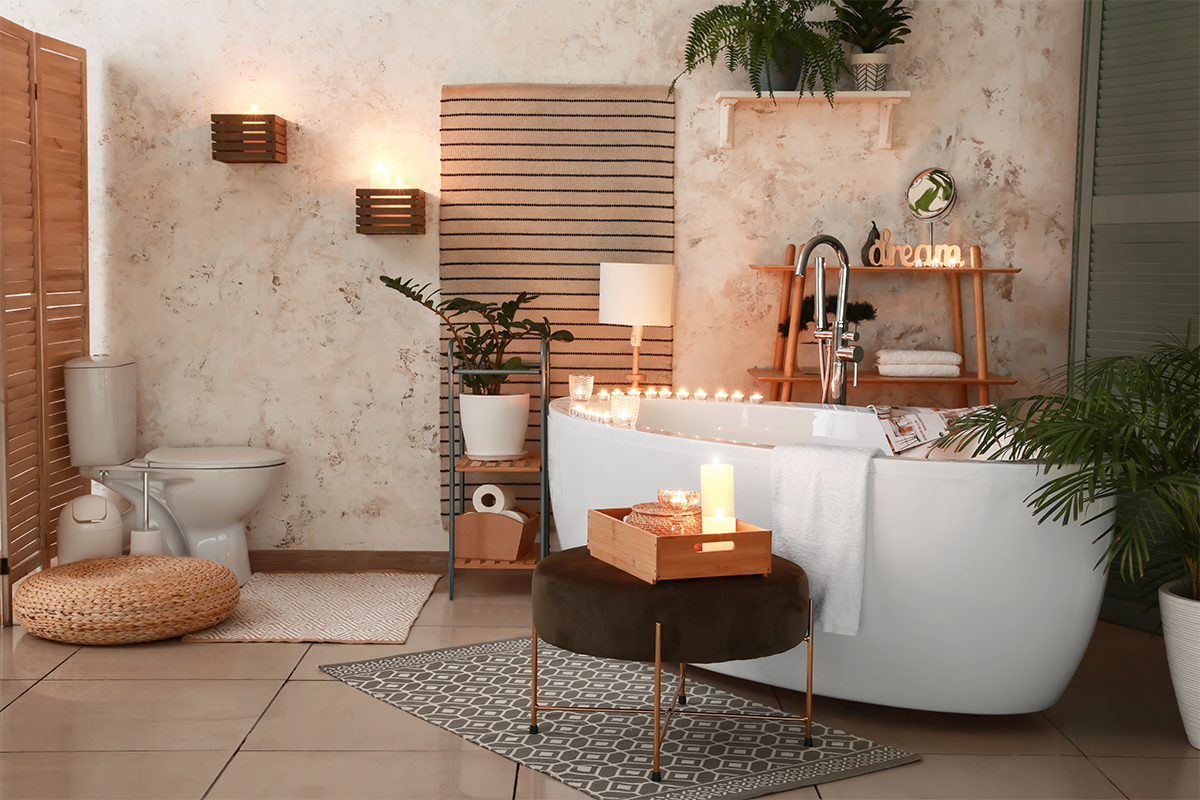By Jennifer Shapira
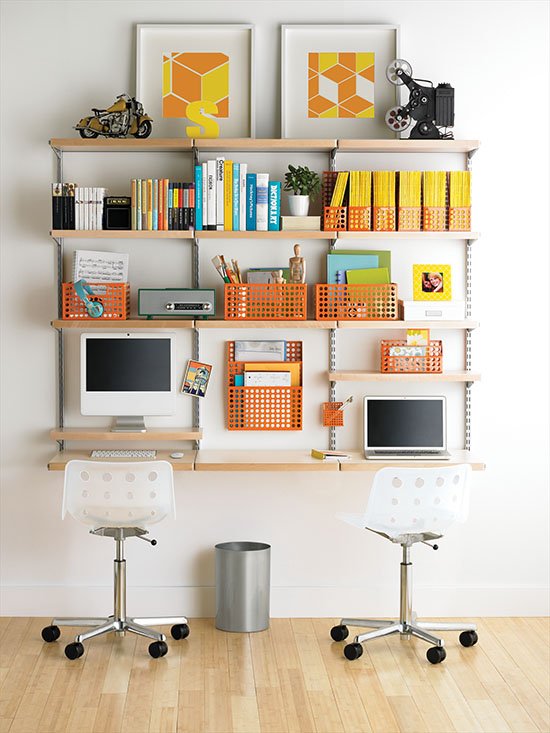
The result of Kacy Paide’s work is often evident in tears of happiness and in grateful hugs. Paide, an organizing expert at The Inspired Office, helps clients tackle the insurmountable. But once they learn to take control of an aspect of their life, that realization is thrilling and reciprocal.
“I worked with a woman a couple years ago who won a couple of hours of my time at an auction. I walked in, and it was a really, really big project in a small apartment. Paper everywhere, kind of like a hoarder situation,” Paide recalls, “and I said: ‘OK. With the two hours we have, where do you want to use me?’ And she said: ‘With the paper in my dining room.’”
Taking baby steps, Paide devised a system that the woman could use for collecting bills and action projects; “I think I left her with five color-coded file folders. And she hugged me. She had tears in her eyes and she said: ‘I have hope for the first time in my life.’ And that was my happiest moment as an organizer because it wasn’t about the room looking different, it was that she took the first step and she saw the great change that could happen in her life from just a tiny change that we made in those two hours.”
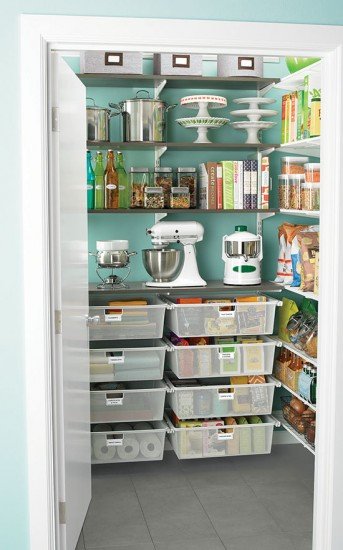
Paide specializes in taking control of cluttered home offices, but she’s also tamed a nature-loving woman’s unruly collection of animal pelts in Pittsburgh and restored order to an electrical engineer’s unsightly Northern Virginia desktop/office thanks to a desperate call from his company’s HR department. And while those jobs may be extreme organizing, on a day-to-day basis Paide works with new clients and checks up on others, sometimes via Skype in far-flung states (California, Idaho) and countries (United Kingdom, Finland).
“There’s so much variety in what I do. I meet so many different people,” says Paide. “I always like to say: disorganization does not discriminate. All socio-economic classes—male, female; young people, old people—you name it. It’s like a great equalizer.”
Office Order
Closer to home, Paide recently helped with Tecla Murphy’s before and after home office renovation in Arlington. Murphy’s previous space had been a hodgepodge of furniture: two mismatched desks, utilitarian but underutilized filing cabinets and an outdated desk chair. Not unlike most situations Paide regularly walks into, bulging folders, papers and office supplies were strewn across all surfaces. She methodically set about trashing, recycling and filing, taking care to note what would make the transition from old office to new.
Paide credits Murphy with the wise decision to involve her before the carpenter started the renovation so she could purge as much as possible before the streamlined space was built out. She helped account for a tailored and accurate number of clever niches, from out-in-the-open mail slots to hidden cabinet space. On the opposite wall sits one very long, uninterrupted multi-use desk, which doubles as a dedicated spot for children to do their homework.
Murphy set about transforming more than just her workspace; she was eager to increase her total body wellness. So, at the suggestion of her physical therapist, she added a temporary platform desk from Vienna-based Stand Steady to her desktop to encourage her to sit less while she was in the office working.
“After [the home office] was totally built out and beautiful, I went back and we did another session where we put everything back together again,” says Paide.
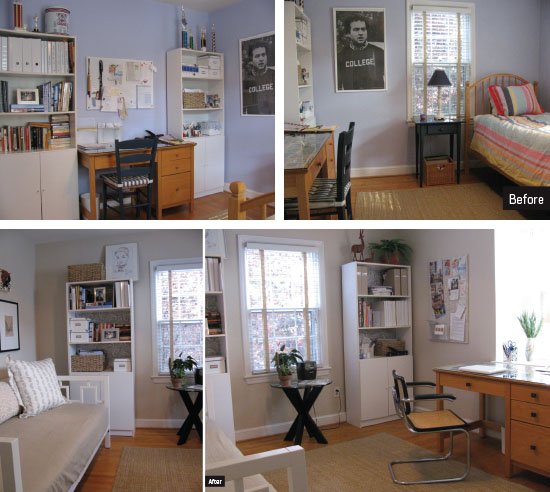
Creative Corners
A trained eye helps when carving out niches in the home to make room for order, but so does creativity.
Professional organizer Melanie Patt-Corner’s dining room also functions as her home’s library, making it the perfect backdrop for book club. From what she has seen throughout working in many homes, dining rooms are often underused. It’s no exaggeration to say she can count on one hand the number of times she’s been ask to organize a dining room. So she took that idea and applied it to her own home in Cabin John, Maryland.
Though she doesn’t fully employ the Dewey Decimal System, she admits her shelves are modeled on it. All fiction is alphabetical by author. And there’s a section on gardening; one on poetry; another on pre-Raphaelite art history, her favorite subject.
“I’m constantly reorganizing them and getting rid of old books,” she says. If a book “doesn’t pass muster for the dining room,” it gets shelved in her husband’s study.
Experts agree, creative uses of space is not rocket science; it’s about maximizing how you live in your home.
Professional organizer Janice Rasmussen recently made over a boy’s bedroom into a home office. After the son left for college, his desk was rehabbed with new drawer pulls, the room got a paint job and new lighting fixtures. His twin bed was sold on Craigslist and replaced with a daybed. The newly organized bookshelves and closet are shared between mother and son, but day-to-day, the space is wholly hers.
“It was really just depersonalizing the child aspect of it and making it more adult-oriented,” says Rasmussen, “which is why [along with painting and changing fixtures] we used artwork that was important to her. The room could function in a whole new way and when her son comes back home, he still sleeps in his bedroom.”
Rasmussen is also currently working on a niche carved from a previously underutilized family room closet. That pocket of space is being turned into a home office zone for the family, with a zebrawood melamine countertop and shelving from the Container Store’s elfa line. The family had removed the closet doors, and bookshelves held the children’s toys, but now the space has a new purpose and requires an uncluttered and more adult look and feel.
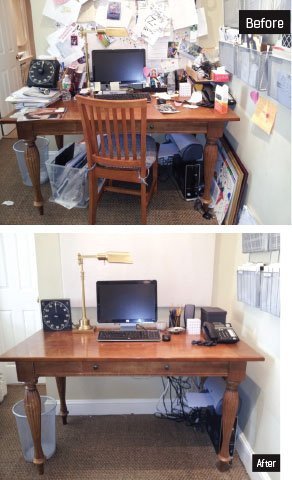
Be Kind to Your Future Self
From her experience, Paide cautions, most people don’t sort through the “nitty-gritty” before a renovation, and they end up cluttering the new space with items that should have been trashed or recycled.
Do the heavy lifting first and the weight will be off your shoulders. You’ll be more likely to appreciate and keep up with the newly ordered space.
The same goes for tackling any project, no matter how large or small. It might seem like common sense: experts say if you have five minutes, start something that you can finish in five minutes. If you have 30 minutes, stay focused for that time on a particular task. It doesn’t matter what the task is. What matters is what will make the most difference to you.
Professional organizer C. Lee Cawley, of Simplify You, Inc., helps clients take to that concept with an oft-quoted mantra: Be kind to your future self. “It’s the idea of: What’s in it for me?”
That is, in a moment of exhaustion, it might seem like a hassle to hang your keys on their designated hook, she says. “But in the morning, when you don’t have to spend time looking for them, you’ll thank yourself.”
Have a Few Minutes, an Hour, a Weekend? Get Organized
(August 2014)


